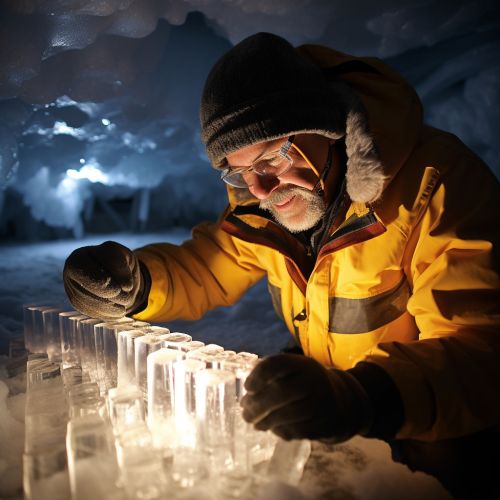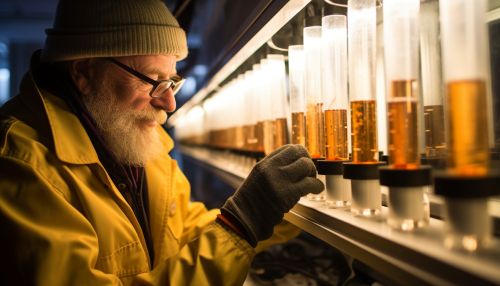Paleoclimatology
Introduction
Paleoclimatology is the scientific study of the Earth's climate over the geologic past. It uses a variety of proxy methods from the Earth and life sciences to obtain data previously preserved within rocks, sediments, ice sheets, tree rings, corals, shells, and microfossils. It then uses the records to determine the past states of the Earth's various climate regions and its atmospheric system.


Historical Overview
The field of paleoclimatology originated in the 19th century with the work of scientists such as Louis Agassiz and Alfred Wegener, who first proposed the theories of ice ages and continental drift, respectively. The development of dating techniques such as radiometric dating, dendrochronology, and ice core sampling in the 20th century allowed for more precise determination of the timing and magnitude of past climate events.
Methods
Paleoclimatologists employ a wide variety of techniques to deduce ancient climates.
Proxy Records
Proxy records are preserved physical characteristics of the past that stand in for direct meteorological measurements and enable scientists to reconstruct the climatic conditions over a portion of the Earth's history. Examples of proxies include ice cores, tree rings, sub-fossil pollen, boreholes, corals, lake and ocean sediments, and carbonate speleothems.
Chemical Proxies
Chemical proxies are the ratios of different isotopes within materials. These ratios are dependent on the temperature and the isotopic composition of the seawater, for example, the oxygen isotope ratio delta-O-18.
Biological Proxies
Biological proxies, such as fossil pollen, can provide information about the climate and environment that those organisms lived in. The distribution of fossils and the isotopic composition of their shells can provide information about past temperatures, salinity, and productivity.
Ice Cores
Ice cores are one of the most effective, though not the only, methods of recreating long term records of temperature and atmospheric gas composition. Ice cores are cylinders of ice drilled out of an ice sheet or glacier. Because the deposition of snow varies throughout the year, creating discrete layers, scientists can study these layers to learn about the climate in the past.
Tree Rings
Dendroclimatology is the study of tree ring growth and the factors that influence the growth of rings. This method can provide precise dates and can be used to temperature and precipitation levels.
Ocean and Lake Sediments
Ocean and lake sediments can be used to infer past climate by examining the presence of certain species, the isotopic composition, and other factors.
Notable Findings
Paleoclimatology has provided several key insights into global climate change.
Ice Ages
The study of past ice ages and periods of glacial advance and retreat has given us a clear understanding of how the Earth's climate can change over long timescales.
Greenhouse Climates
Paleoclimatology has also revealed periods of the Earth's history when greenhouse gas levels were significantly higher than they are today, leading to warm climates.
Abrupt Climate Change
The study of past climates has also revealed that Earth's climate can change abruptly under certain conditions.
Future of Paleoclimatology
The future of paleoclimatology is likely to involve refining existing methods and developing new ways of investigating past climates. This will likely involve the integration of different methods to improve the resolution at which past climates can be observed.
